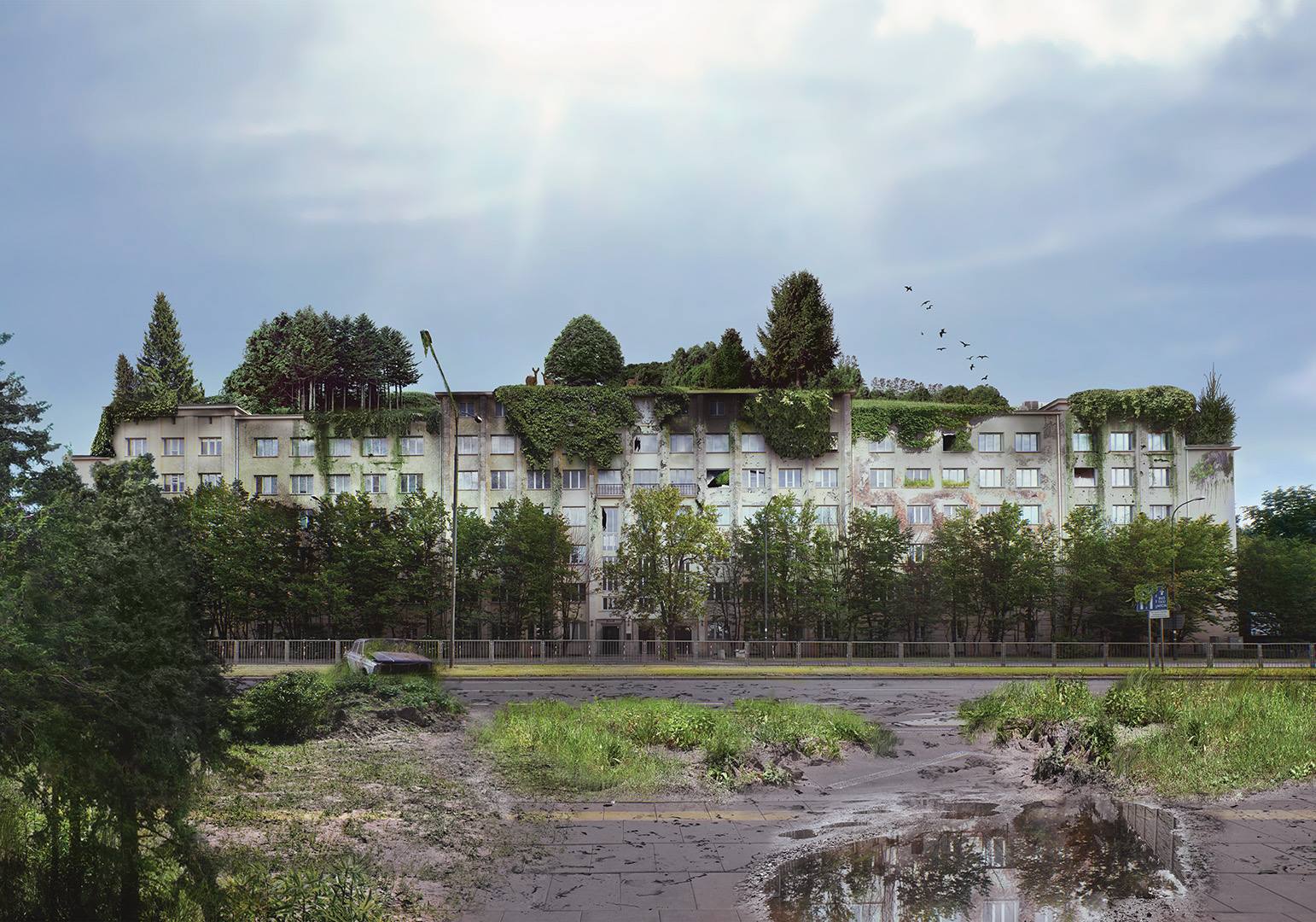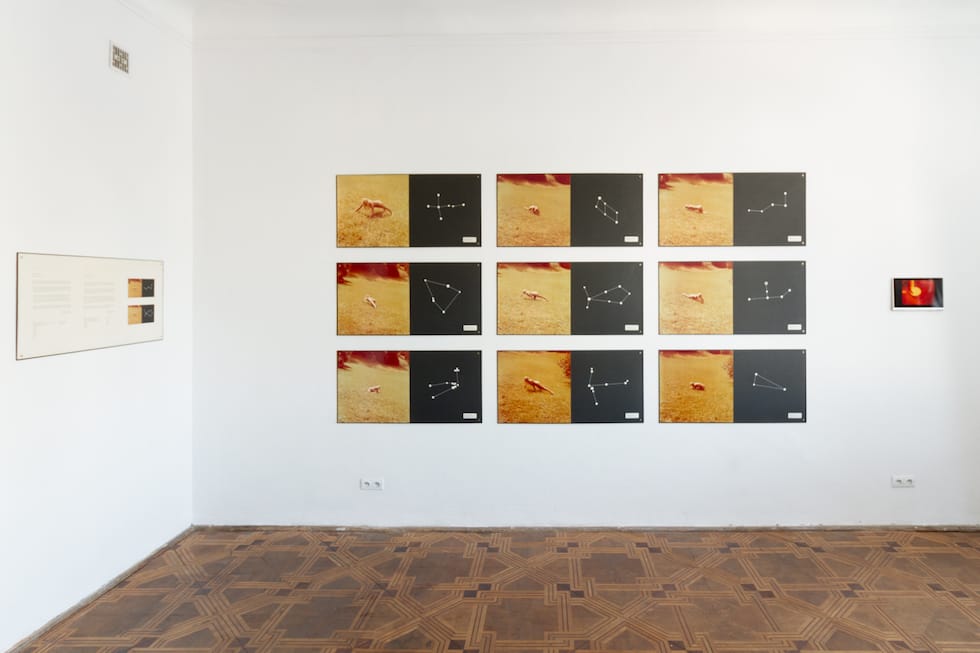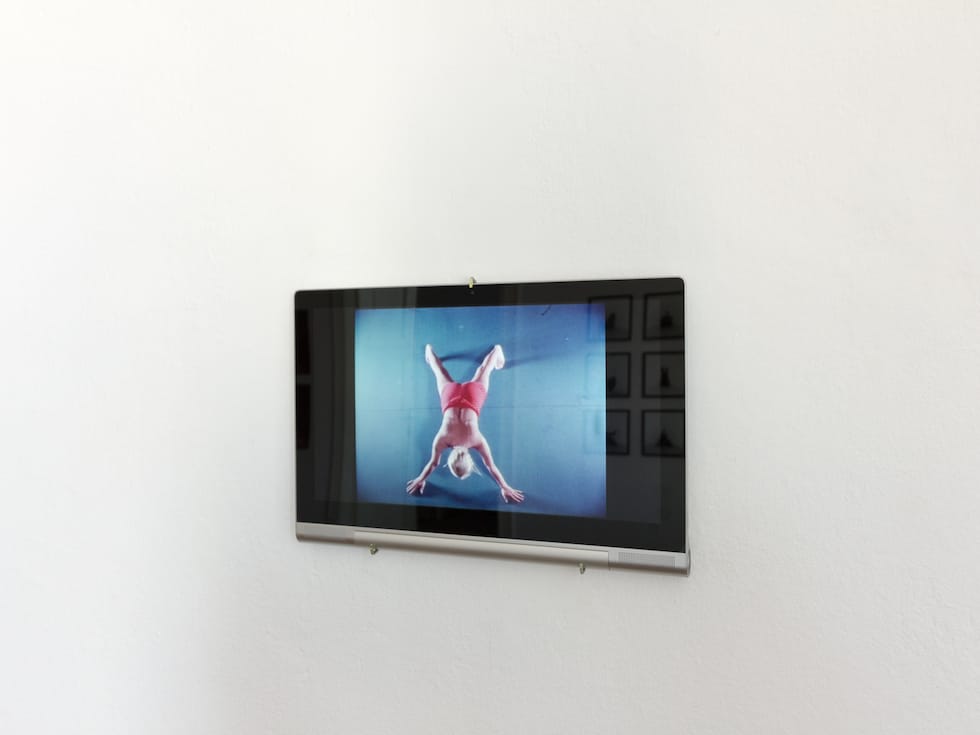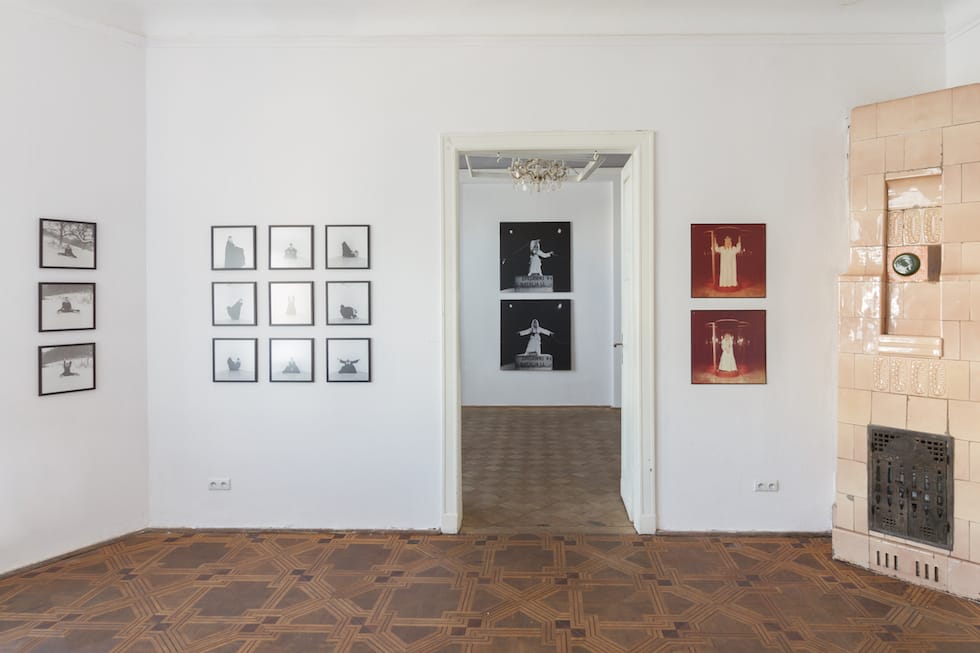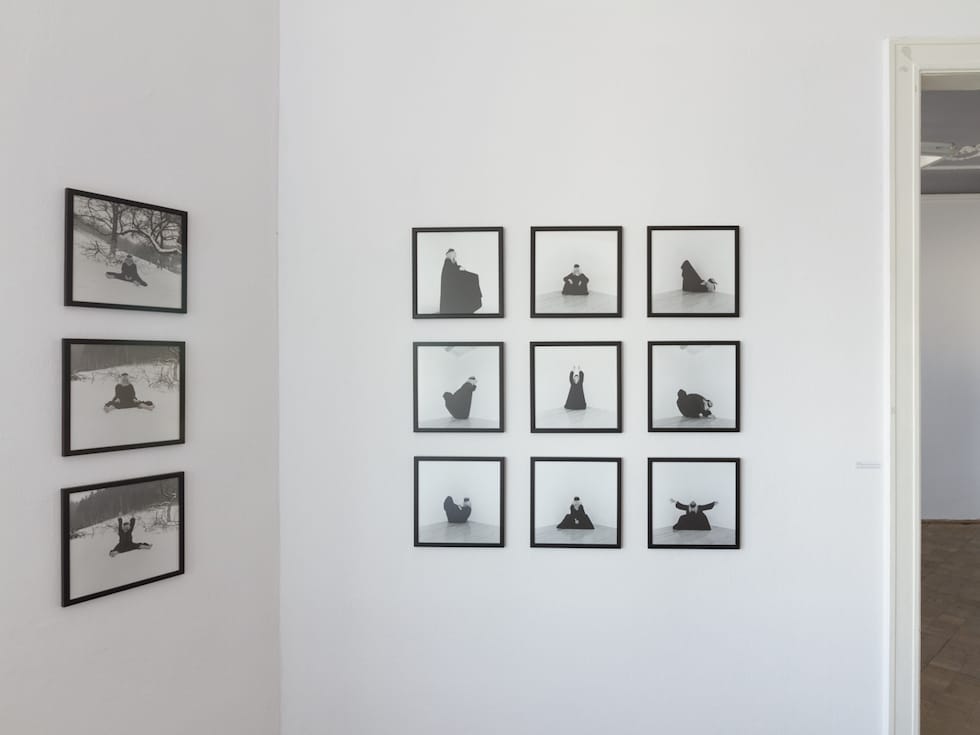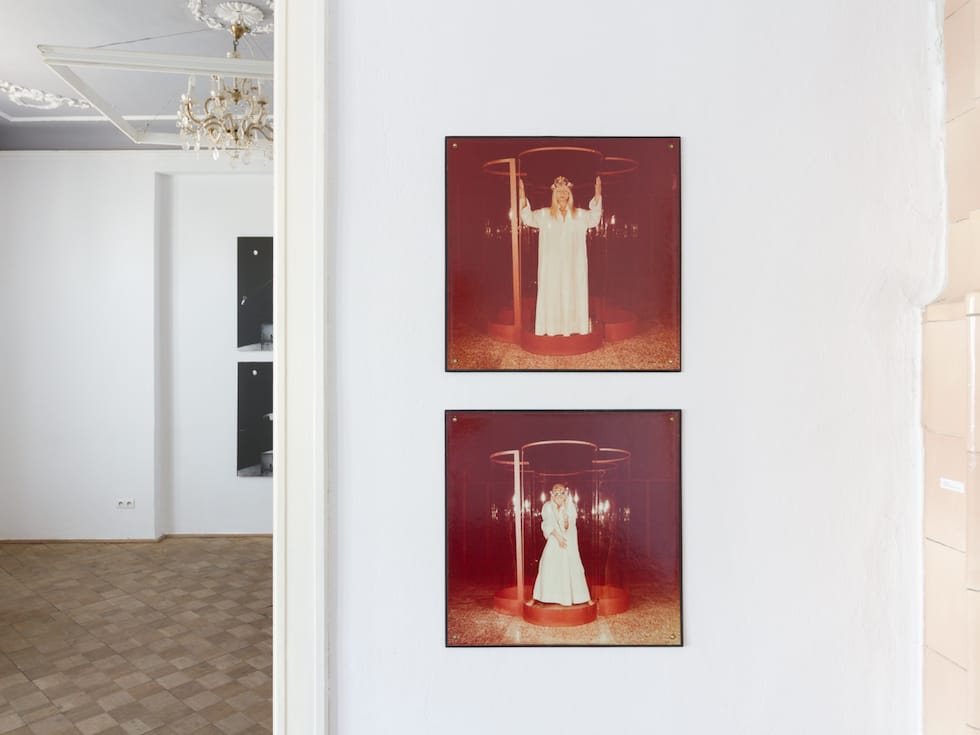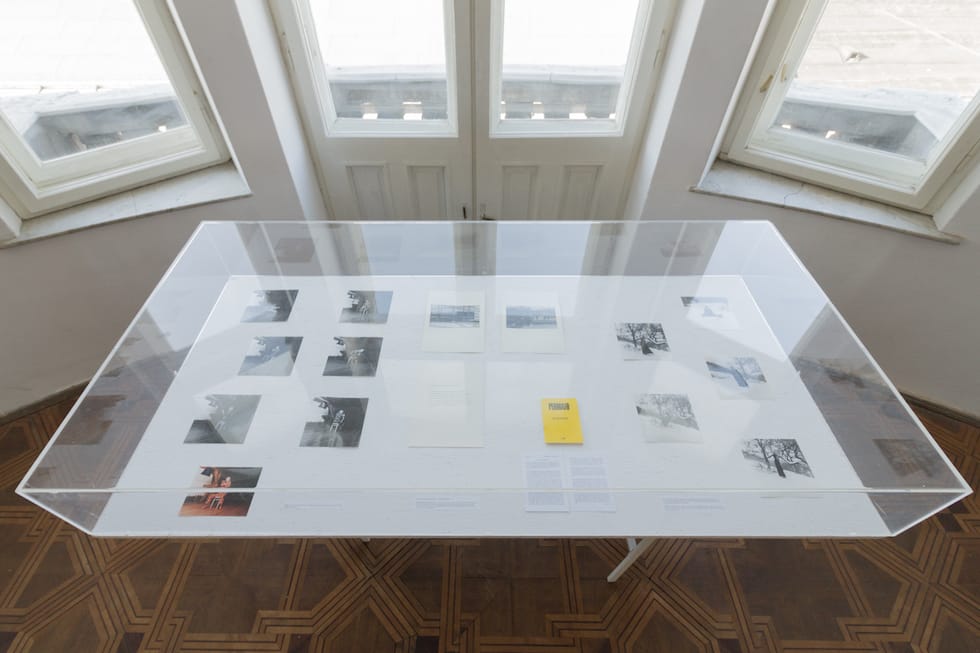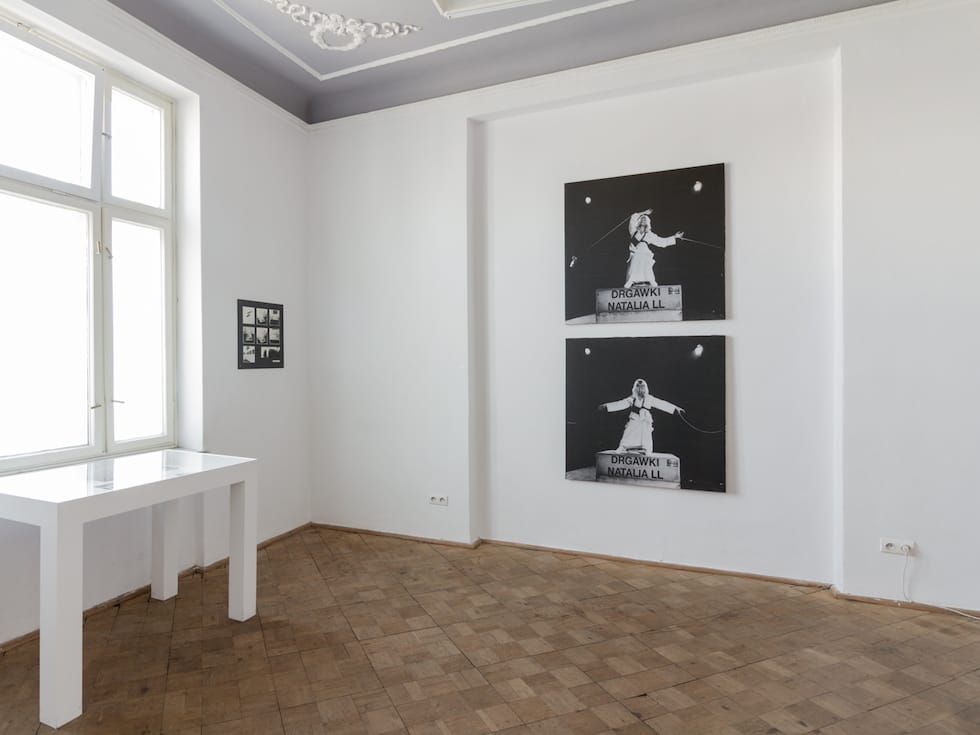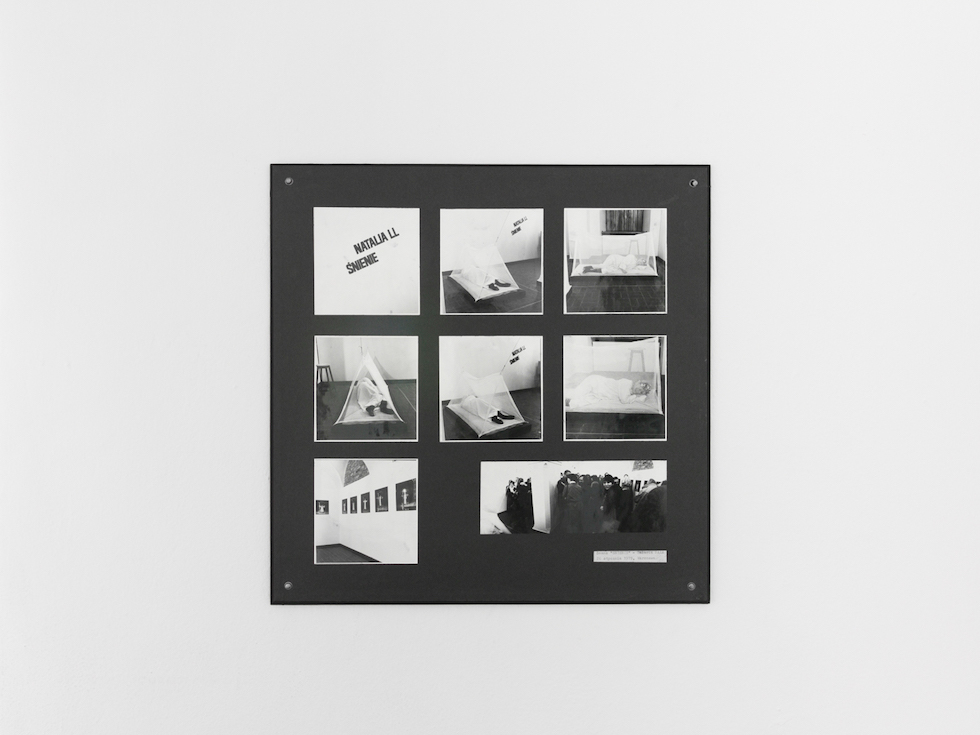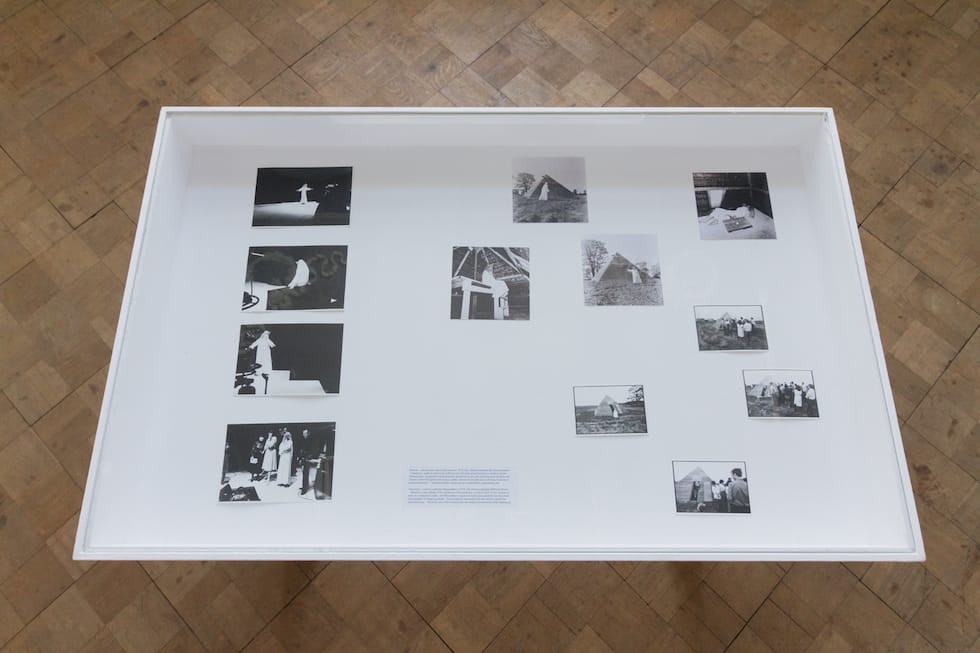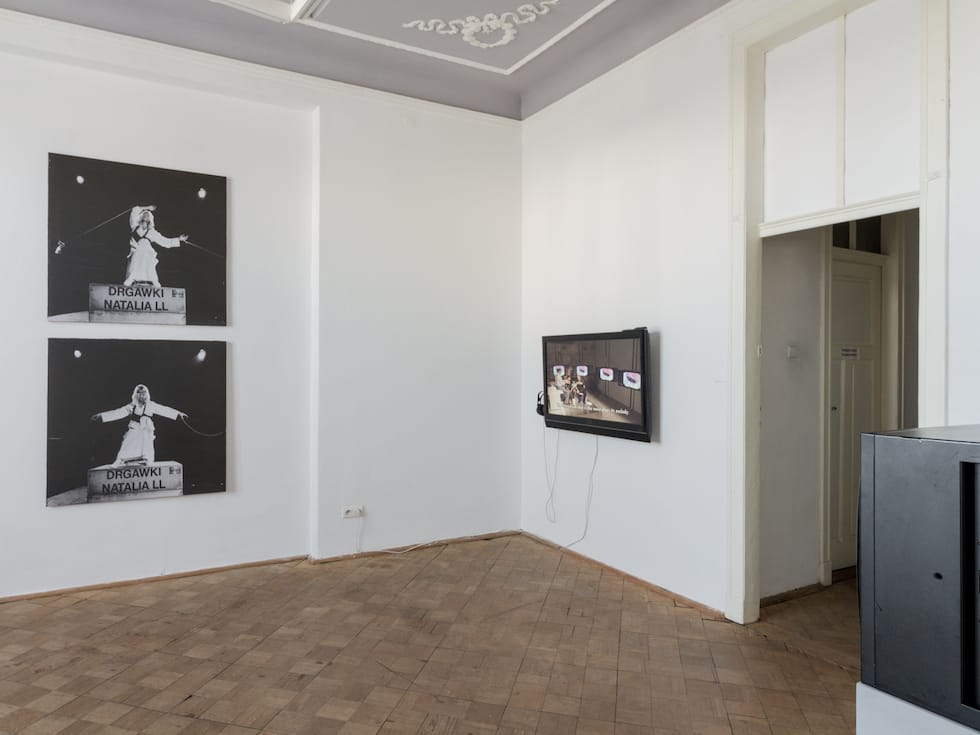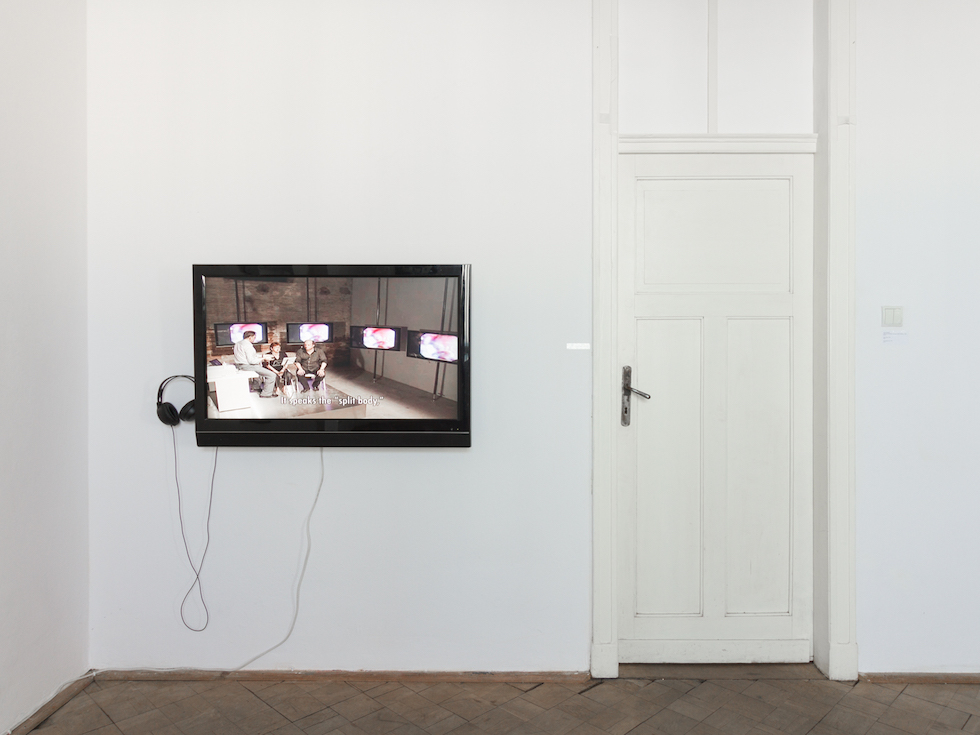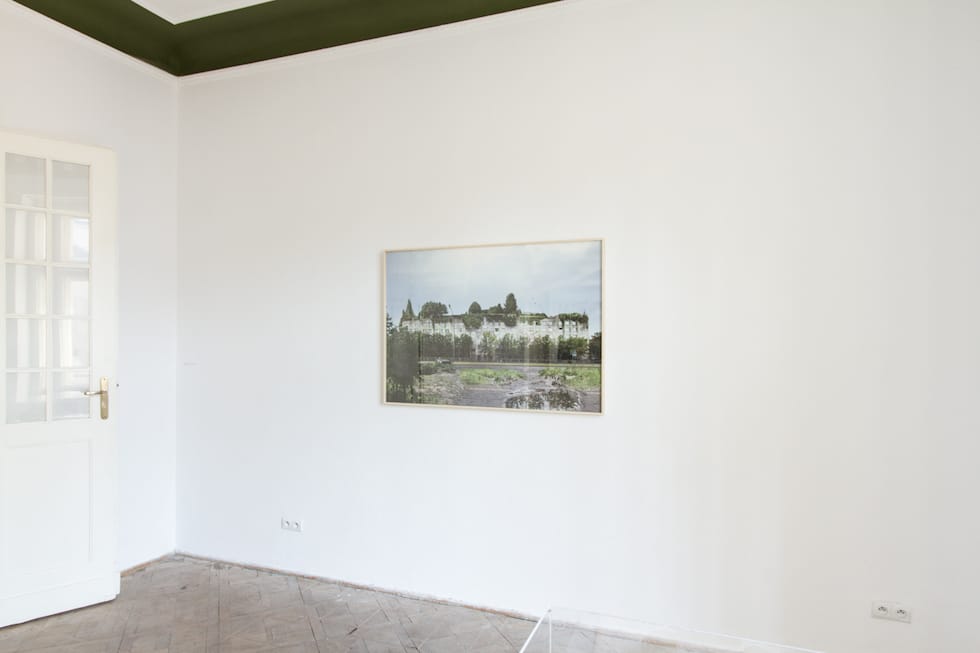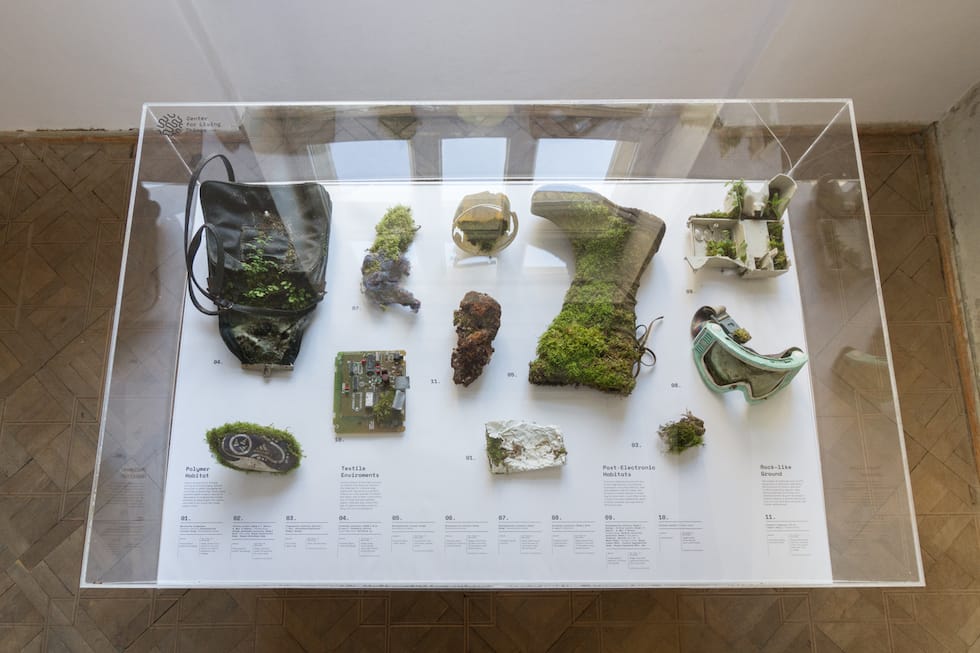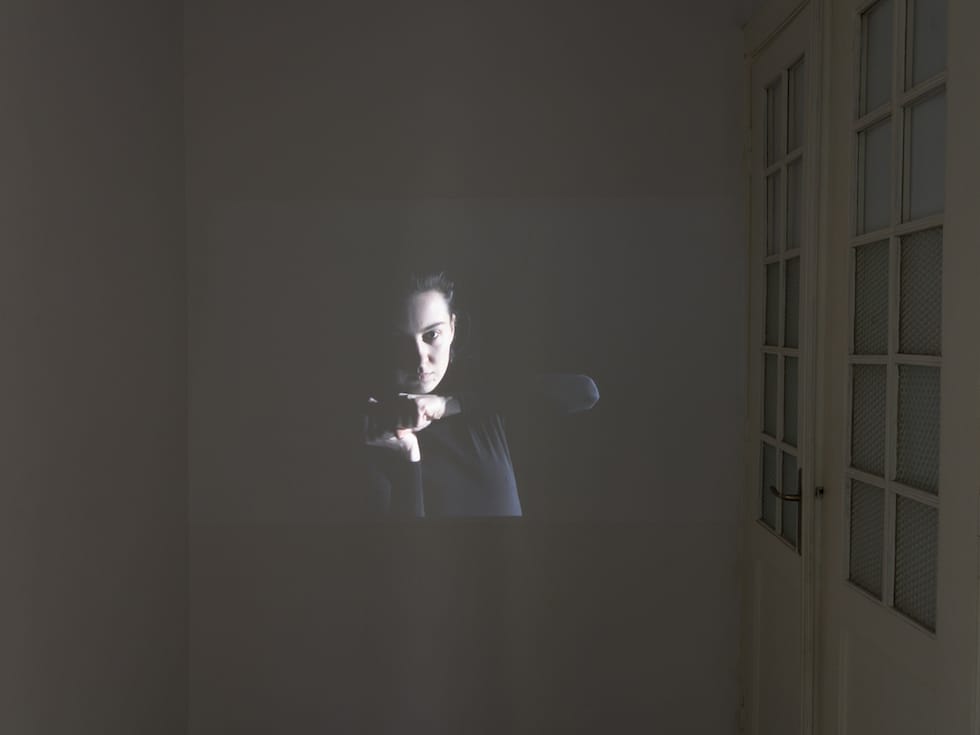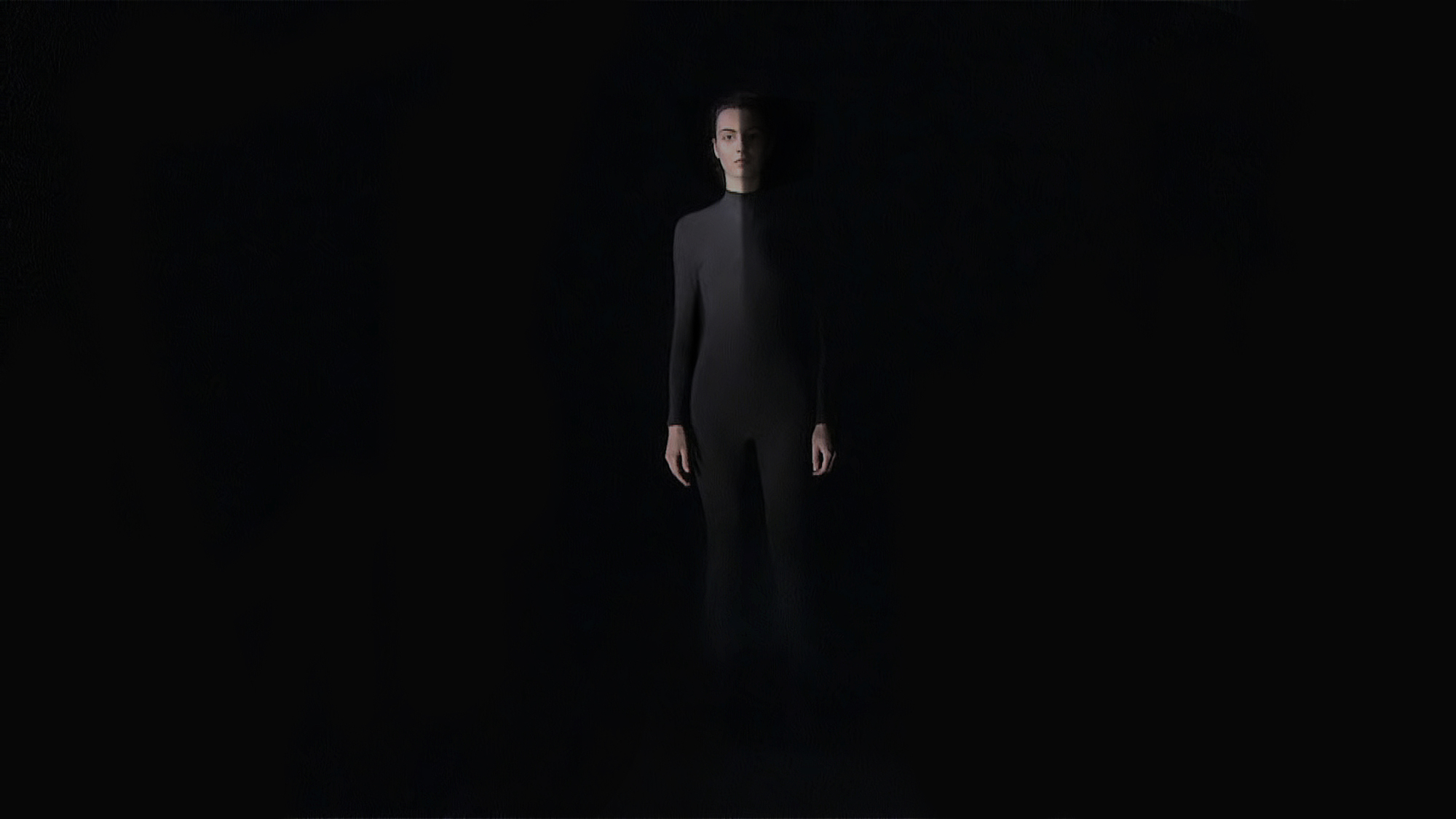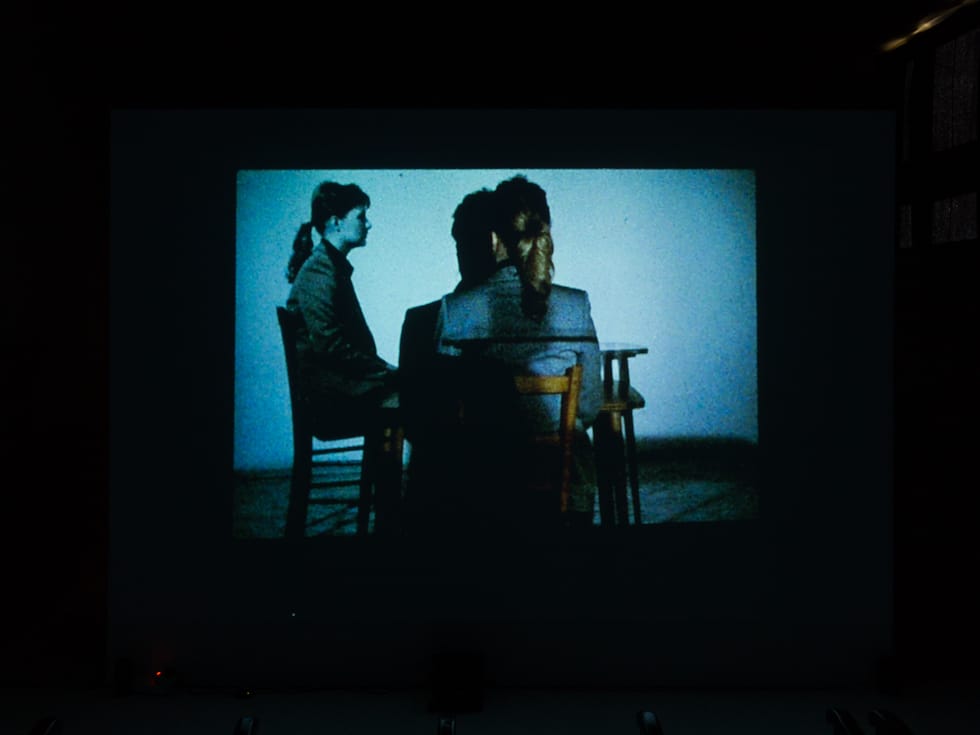Dzielą je dwa pokolenia: VALIE EXPORT urodziła się w 1940, Natalia LL w 1937, a Diana Lelonek i Justyna Górowska w 1988 roku. Czas największej aktywności dwóch pierwszych artystek przypadał na okres wzmożonych ruchów społecznych i rozwoju drugiej fali feminizmu. Diana Lelonek i Justyna Górowska rozpoczęły swoją działalność kilka lat temu – w momencie niepokoju i niepewności wynikających z głębokiego kryzysu społecznego i ekonomicznego oraz świadomości nieodwracalnych szkód jakie człowiek wyrządził środowisku naturalnemu. Zeitgeist to nie tylko wystawa ukazująca ducha epoki poprzez twórczość aktywnych w danym czasie artystek. Jest to również próba naszkicowania połączenia pomiędzy artystkami tworzącymi w odmiennej atmosferze, dla których kołem zamachowym były inne problemy, ale które połączyła głęboka wrażliwość i umiejętność przekazania esencji współczesności poprzez aktywność na polu sztuki.
Radykalne feministyczne akcje VALIE EXPORT oraz trudne do zaakceptowania przez odbiorców w latach 70. zdjęcia i filmy Natalii LL należą dziś do kanonu. Kanon ten wciąż jednak pozostaje żywy, a twórczość obydwu artystek ma ogromne oddziaływanie na kolejne pokolenia. Wpływ ten nie zawsze jest bezpośredni, czasem chodzi tylko o postawę – odwagę w komunikowaniu swoich poglądów, racji, sposobu widzenia rzeczywistości. Takie powinowactwo można dostrzec u dwóch młodych artystek – Diany Lelonek i Justyny Górowskiej, które odwołują się do sytuacji natury w dobie antropocenu. Nie trzeba podkreślać, że tematy te są równie aktualne jak feminizm w latach 60. i 70. Nie oznacza to również, że problemy ważne dla VALIE EXPORT i Natalia LL mamy już “przerobione i załatwione”, ich twórczość jest dla nas wciąż żywa. Wystawa dotyczy również związków pomiędzy artystkami, które choć nie są przyjaciółkami, znają się, rozumieją, wystawiają razem – działają niezależnie, ale wspólnie tworzą Zeitgeist.
VALIE EXPORT i Natalia LL spotkały się kilkukrotnie pomiędzy 1975 a 1995 rokiem przy okazji wspólnych wystaw. Znajomość tę można więc określić jako artystyczne powinowactwo – przez lata ich losy przeplatały się, obydwie znały nawzajem swoją twórczość, były świadome swoich dokonań, a rozwój ich działalności był nieraz paralelny. Tak było w przypadku Interrupted line VALIE EXPORT z lat 1971-72 oraz Rejestracji permanentnej co 1km autostrady E22 Natalii LL z 1970 roku. Obydwie prace to filmowe zapisy drogi: u VALIE EXPORT z perspektywy wnętrza samochodu, a u Natalii LL z zdjęcia były wykonywane na zewnątrz.
Na wystawie Zeitgeist prezentujemy przede wszystkim dokumentacje performansów obu artystek. Rozpoczynamy od legendarnego zapisu przeprowadzonego w Wiedniu w 1968 roku TAP und TASTKINO (Dotyk i smak kina). Zarówno ta rejestracja jak i pochodząca z tego samego roku słynna akcja VALIE EXPORT z Peterem Weiblem Aus der Mappe der Hundigkeit (Out of the Folder of Dogginess) stanowią pewną cezurę zarówno w sztuce feministycznej, jak i w performansie. Na wystawie skupiamy się na poszukiwaniach artystki dotyczących komunikacji i języka oraz jego fizycznych aspektów. Dlatego też prezentujemy dokamerowe performanse Body tape (1970) oraz Adjungierte Dislokationen (Conjoined Dislocations)(1973), zapiski filmowe z początku lat 80. Syntagma (1983), a także rejestrację performansu The voice as performance, act and body wykonanego przez artystkę w 2007 roku w ramach Biennale w Wenecji.
Natalia LL już od drugiej połowy lat 60. tworzyła dokamerowe performanse będące „permanentną rejestracją“ – aktu seksualnego, drogi, czasu, czy wreszcie twarzy. Pod koniec lat 70. twórczość artystki zmienia się, wkraczając w rejony mistyki, mitologii i kosmologii. Nadal jednak podstawowym medium jej sztuki pozostaje ciało. W drugiej połowie lat 70. performanse artystki stały się bardziej autonomiczne, często nie wykonywane bezpośrednio do obiektywu, choć świadomość zapisu i konieczności jego dokonania była dla autorki oczywista. Pierwszym z cyklu tych seansów był zatytułowany Śnienia i został zrealizowany w 1978 roku. Akcje te przybierały różne postacie – Natalia LL spała w obecności publiczności lub tylko przed kamerą, ale również sama fotografowała śpiące osoby. Seanse te wiązały się z potrzebą dotarcia do podświadomości – artystka bardzo często tuż po przebudzeniu zapisywała swoje sny. W tym samym roku Natalia LL zrealizowała seans Punkty podparcia, w czasie którego na polanie w Pienińskim Parku Narodowym nago wykonywała rodzaj gimnastyki połączonej z choreografią. Każda z tworzonych przez nią figur odpowiadała jakiejś konstelacji, stanowiąc rodzaj pomostu pomiędzy kobietą a kosmosem. Na początku lat 80. Natalia LL kontynuowała działalność performerską realizując w 1981 roku Drgawki oraz Stany skupienia.
W twórczości Justyny Górowskiej szczególne miejsce zajmują wątki posthumanistyczne, eksplorowane niemal od początku. FoxP2 z 2012 roku to ciekawy ze względu na swoje walory formalne i subtelną poetykę wideoperformans, w którym autorka poddaje w wątpliwość zasadność przeciwstawiania sobie kategorii tego, co ludzkie i nie-ludzkie, oraz skupia się na języku jako na najmocniejszym wyrazicielu, a nawet twórcy tych kategorycznych rozgraniczeń. Górowska odtwarza tu scenę tresury słonia jedynie za pomocą wyrwanych z kontekstu brutalnych słów, wypowiadanych w nieadekwatnie łagodny, poetycki sposób. Uwaga skupiona jest nie na pozostającym w sferze domysłu zwierzęciu, lecz na człowieku, który obejmuje nad nim panowanie za pomocą i ze względu na język.
Center for the Living Things Diany Lelonek jest instytutem powołanym do życia w2016 w celu badania, kolekcjonowania i upowszechniania wiedzy o nowych formach wzajemnych zależności pomiędzy przedmiotami i organizmami nie-ludzkimi. Wszystkie okazy zgromadzone w kolekcji Centrum to porzucone przedmioty, zużyte, niepotrzebne już towary – odpady systemu nadprodukcji, które stały się środowiskami życia dla wielu organizmów. W pracy tej szczególnie istotna jest dialektyka między odpadem, porzuconym efektem ludzkiej działalności a nowym, powstającym na jego zgliszczach i pasożytującym na jego odrzuceniu życiem. Latem 2017 w momencie eskalacji konfliktu dotyczącego wycinki Puszczy Białowieskiej Diana Lelonek stworzyła również zdjęcie Gmach Ministerstwa Środowiska porośnięty przez środkowoeuropejski las mieszany. Choć jest to fikcja, fotomontaż, plasuje się on blisko założeń Center for the Living Things.
____
Zeitgeist
VALIE EXPORT, Natalia LL, Justyna Górowska, Diana Lelonek
They are two generations apart: VALIE EXPORT was born in 1940, Natalia LL in 1937, whereas Diana Lelonek and Justyna Górowska both in 1988. The period of the most intensive activity of the former two artists coincided with the rise of social movements and second-wave Feminism. The artistic careers of Diana Lelonek and Justyna Górowska began several years ago – at a time of anxiety and uncertainty caused by a profound social and economic crisis as well as the awareness of irreversible damage caused by humans to the natural environment. Zeitgeist is an exhibition that not only portrays the spirit of an epoch through the lens of the work of the most active artists of the time. It is also an attempt to draw a line between artists working in a different atmosphere, deriving inspiration from different problems, but sharing a profound sensitivity and ability to convey the essence of the contemporary times through their activity in the field of art.
The radical Feminist actions by VALIE EXPORT as well as Natalia LL’s photographs and films, which viewers in the 1970s found hard to accept, nowadays belong to the artistic canon. Yet, the canon is not ossified and the work of both artists has a major influence on the younger generations. This influence is not always direct and sometimes concerns only the artistic approach – the courage to communicate one’s views, arguments, one’s outlook on reality. Such a kinship can be seen in the case of the younger artists – Diana Lelonek and Justyna Górowska, who refer to the situation of nature in the age of Anthropocene. It goes without saying that this issue is as topical as Feminism was in the 1960s and 1970s. Nor does it mean that the problems of importance for VALIE EXPORT and Natalia LL have already been “settled and solved,” their work has retained its relevance. The exhibition also addresses links between the artists who – although they are not close friends and work independently – know and understand each other as well as form the Zeitgeist.
VALIE EXPORT and Natalia LL met several times between 1975 and 1995 on the occasion of exhibitions of their works. Their contact can therefore be described as artistic kinship – their paths have been crossing for years, they both know each other’s work and achievements, and their practices have sometimes developed along parallel lines. That was the case with VALIE EXPORT’s Interrupted Line from 1971–72 and Natalia LL’s Permanent Record of Every 1 Km of the E22 Motorway from 1970. Both works are film records of a road – seen from inside the car in VALIE EXPORT’s film, and from the outside in Natalia LL’s work.
The exhibition Zeitgeist primarily features records of both artists’ performances. It begins with a legendary footage of the action TAP und TASTKINO (Tap and Touch Cinema), carried out in Vienna in 1968. Both this record and VALIE EXPORT’s famous action with Peter Weibel Aus der Mappe der Hundigkeit (Out of the Folder of Dogginess) from the same year mark a certain watershed moment both in Feminist art and in performance art. The exhibition highlights the artist’s investigations in the field of communication and language as well as its physical aspects. Hence we present her performances-for-camera Body tape (1970) and Adjungierte Dislokationen (Conjoined Dislocations) (1973), film sketches from the early 1980s Syntagma (1983), as well as the footage of the performance The Voice as Performance, Act and Body, carried out by the artist in 2007 at the Venice Biennale.
Already in the second half of the 1960s Natalia LL began creating performances-for-camera, which adopted the form of “permanent records” – of a sexual intercourse, a road, time or a face. At the end of the 1970s, the artist’s work witnesses a change and enters the spheres of mysticism, mythology and cosmology. Yet, the body continues to function as her primary medium. Natalia LL’s performances acquired more autonomy in the 1970s; they were seldom performed directly for the camera, although the awareness and necessity of film documentation was obvious for the artist. The first of a cycle of those seances, titled Dreaming, was conducted in 1978. The actions adopted different forms – Natalia LL was asleep in the presence of the viewers or only with the camera as a witness; she also photographed sleeping people herself. Those seances stemmed from the pursuit of reaching the subconscious – the artist very often noted down her dreams immediately after waking up. The same year, Natalia LL carried out the seance Points of Support, during which she performed nude gymnastics combined with choreography on a meadow in the Pieniny National Park. Each of the figures that her body adopted corresponded to a certain stellar constellation, thus building a bridge between the woman and the universe. At the beginning of the 1980s, Natalia LL continued her performative practice in such actions as Twitches and States of Concentration from 1981.
The underlying theme in Justyna Górowska’s work are the questions of Posthumanism, which the artist has explored almost from the very beginning of the practice. FoxP2 from 2012 is a video-performance – characterised by interesting formal qualities and subtle poetics – in which Górowska challenges the rationality behind the opposition between human and non-human categories, and concentrates on language as the most powerful means of expression, or even the creator of these categorical boundaries. The artist re-enacts a scene of training an elephant merely by means of brutal commands taken out of their original context and pronounced in an inadequately gentle and poetic manner. The focus of the work is not on the animal, which remains a matter of guesswork, but on the human being who dominates it by means and because of language.
Diana Lelonek’s Center for the Living Things is an institute established in 2016 in order to research, collect and propagate knowledge on new forms of mutual relations between objects and non-human organisms. All the specimens gathered in the Center’s collection are abandoned objects, used and discarded goods – the waste material of the system of excessive production, which began to provide a habitat for many organisms. The work revolves around the dialectic of waste, discarded products of human activity, and the new life that emerges on them and become a parasite that feeds off its disposal. In the summer of 2017, as the conflict escalated around the logging of the Białowieża Primeval Forest, Diana Lelonek created the work The Edifice of the Ministry of the Environment Overgrown with European Mixed Forest. Although it is pure fiction, a photomontage, it closely corresponds to the founding principles of the Center for the Living Things.
Partner: Austriackie Forum Kultury w Warszawie / Austrian Cultural Forum, Warsaw


